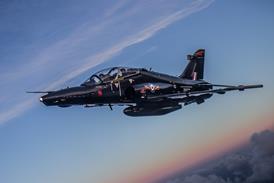Investigators have filed as "unexplained" the fatal loss of a Lufthansa Flight Training aircraft in Arizona last year, although there is strong suspicion that a close encounter with a US fighter, just half a minute before, contributed to the crash.
The single-engined Beechcraft F33, flown by a 22-year old student pilot, dived towards the ground and crashed just 29s after a Lockheed Martin F-16 crossed in front of her aircraft.
She had been performing a solo flight to Phoenix Goodyear Airport, the base for Lufthansa’s affiliated Airline Training Centre Arizona, on 1 February 2006 and during the flight had climbed towards a designated practice area.
After reaching an altitude of 4,500ft the pilot reduced power and the aircraft started descending at 500ft/min. The National Transportation Safety Board (NTSB) says that, at this point, the pilot may have received a collision-avoidance warning that another aircraft was approaching from her right and close to her altitude.
Seconds later, says the NTSB, the F-16 crossed in front of the F33 from right to left. Radar data shows that, at the point of closest approach, the aircraft were separated by 1,850ft (564m) laterally and 400ft (122m) vertically.
After the F-16 passed the F33’s descent steepened. Its descent rate eventually exceeded 2,500ft/min, and the aircraft struck the ground at a 50° nose-down attitude, with its right wing low.
“Multiple close examinations of the aircraft wreckage failed to reveal any evidence of mechanical failure or malfunction,” says the NTSB, adding that there were no inconsistencies in the student’s medical records.
But it adds that, despite the F-16 airprox, it cannot directly link the fighter to the accident, stating: “A study of the wake and vortex turbulence that would have been produced by the F-16 determined that the generated vortices could not have dropped low enough to affect the path of the student’s aircraft.
“It is certainly possible – and consistent with the circumstances of the accident – that the student pilot lost consciousness following her presumed near-collision; however, there is not enough information available to fully support this hypothesis.”
Airline Training Centre Arizona president and chief executive Matthias Kippenberg says: “Lufthansa Flight Training believes the investigation and the subsequent report were thorough and comprehensive.”
Neither Lufthansa Flight Training nor the Arizona centre are prepared to comment further on the findings of the NTSB inquiry, and have not disclosed whether any training procedures have been amended as a result of the accident.
Source: FlightGlobal.com























